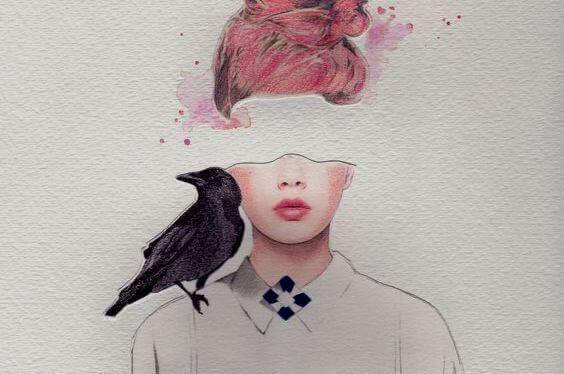We all go through painful moments or unexpected negative situations at some point in our life that we must overcome. However, this type of experience marks so many people that it generates negative self-talk. This dialogue, in and of itself, is not recommended, but it is even more dangerous when it is likely to continue and become a habit.
The truth is that no one is free to face a problem that they cannot solve. Either because of its complexity or because we don’t have the tools to fix it. In these circumstances, and if we rate the problem as important, it is normal for anxiety to arise: the challenge will have become a threat.
- In this type of problems it is common to have internal dialogues that reinforce negative ideas and refer us to the painful episode that we cannot yet overcome.
- The worst thing about this is that in the face of every new experience that reminds us of what happened.
- We begin to react negatively because we consider it potentially dangerous.
Anxiety in anticipation is the main component of this type of dynamics of thought, from there the person develops distorted premises that are constantly repeated and increase initial anxiety to become something unbearable.
When people suffer anxiety and anxiety often develop catastrophic internal dialogue, certainly this vision of life is the product of an altered and therefore distorted emotional state, the danger of this situation is that, if not corrected in time, it can become a vicious circle that worsens over time, which can lead to a panic attack.
Symptoms characteristic of a panic attack include chest depression, tachycardia, nausea, sweaty hands and palpitations. In biological terms, this is a mammal’s normal response to a threat. A person trapped in panic even considers a situation that can be controlled as a threat. Inadvertently, internal dialogue reinforces negative and catastrophic ideas, so the person loses control and goes into crisis.
Panic attack can get worse and severe. However, when we act effectively in the face of the first symptoms, that crisis eventually collapses and the person is able to get out of a cycle of negative thoughts, this is possible because crises involve a negative mental dynamics learned and therefore admit changes. if that’s our goal.
Experts in the field of psychology have categorized these internal dialogues into four, which act as triggers for anxiety or anxiety. They are: the catastrophic, the self-cryptic, the victim and the self-oxygen.
Being aware of such internal dialogues is the first big step in regaining control and avoiding a negative perception of ourselves or our context, which in the end only triggers our state of anxiety.
True change occurs when we begin to detect these negative thoughts and replace them with positive affirmations, it is important to control our breathing, relax and calmly face situations, otherwise pessimistic and self-destructive attitudes will continue.
It is not easy to change this type of reaction into what we consider threatening, but the same happens when we want to change a bad habit, such as smoking or eating too much chocolate. Of course, changing a bad habit takes determination and effort. , but it is possible to do so if we put enough effort into this goal.

